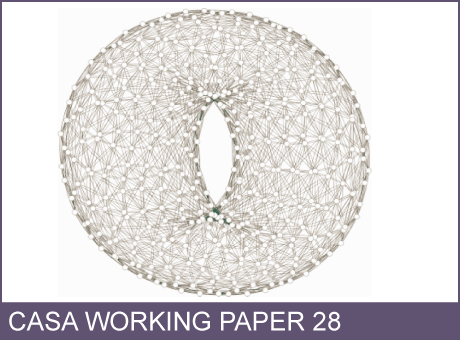CASA Working Paper 28

1 November 2000
How Cellular Models of Urban Systems Work (1. Theory)
Cellular automata (CA) models have been applied to urban systems with a recent fervor and have used to explore research questions in applications from location to urban morphology. This paper (part 1 of a two-part series) is intended to serve as an introduction to how cellular models of urban system actually work, on a theoretical level. Part 2 focuses on how to build urban CA models in a practical context. This paper begins by tracing the intellectual roots of urban CA in complexity (section 2) and computer science (section 3).
In section 4, the paper begins to discuss urban CA. Section 4.1 outlines the advantages of using CA in urban studies. Section 4.2 describes how CA must be modified for urban applications. Section 4.3 then discusses some likely avenues for future development in the field. The paper concludes in section 5 with a discussion on where research at the Centre for Advanced Spatial Analysis at University College London is moving in the direction of agent-based and urban CA models.
This working paper is available as a PDF. The file size is 648KB.
Authors: Paul Torrens
Publication Date: 1/11/2000
 Close
Close

